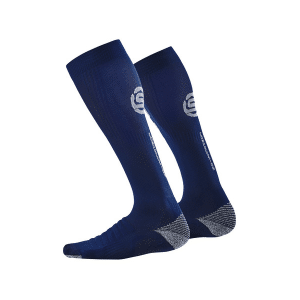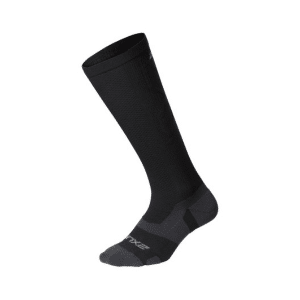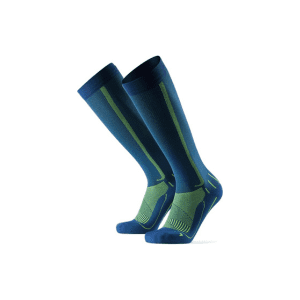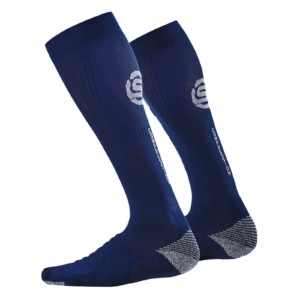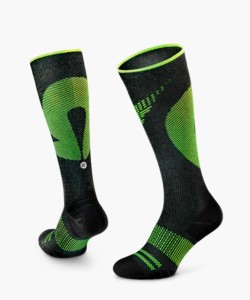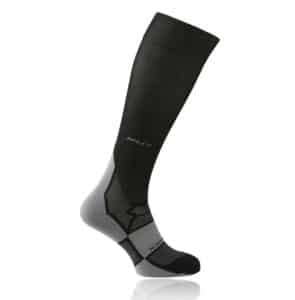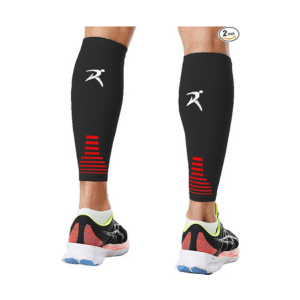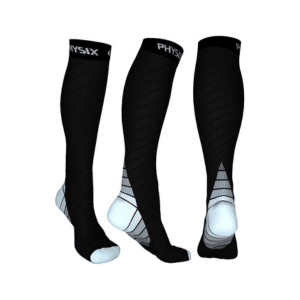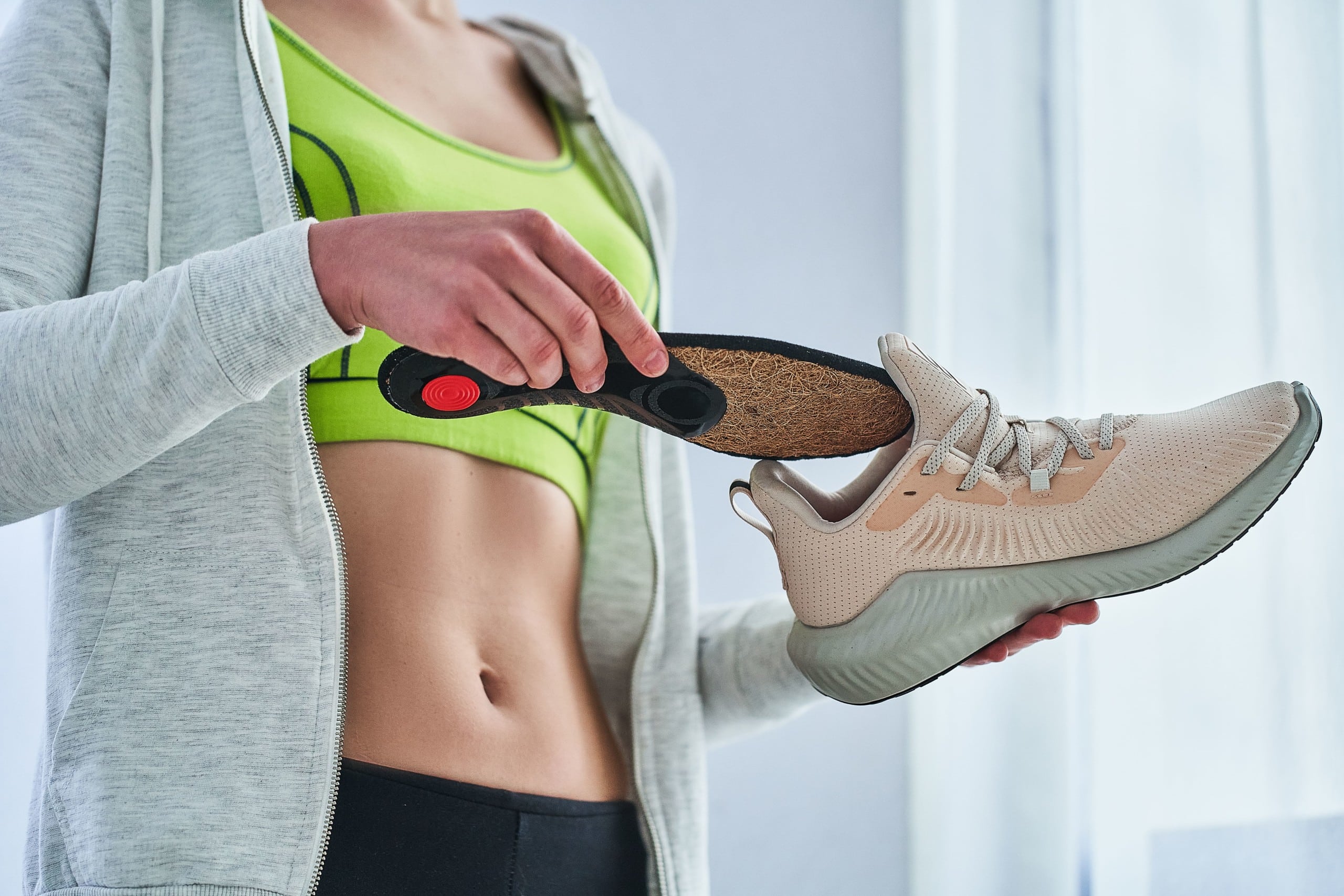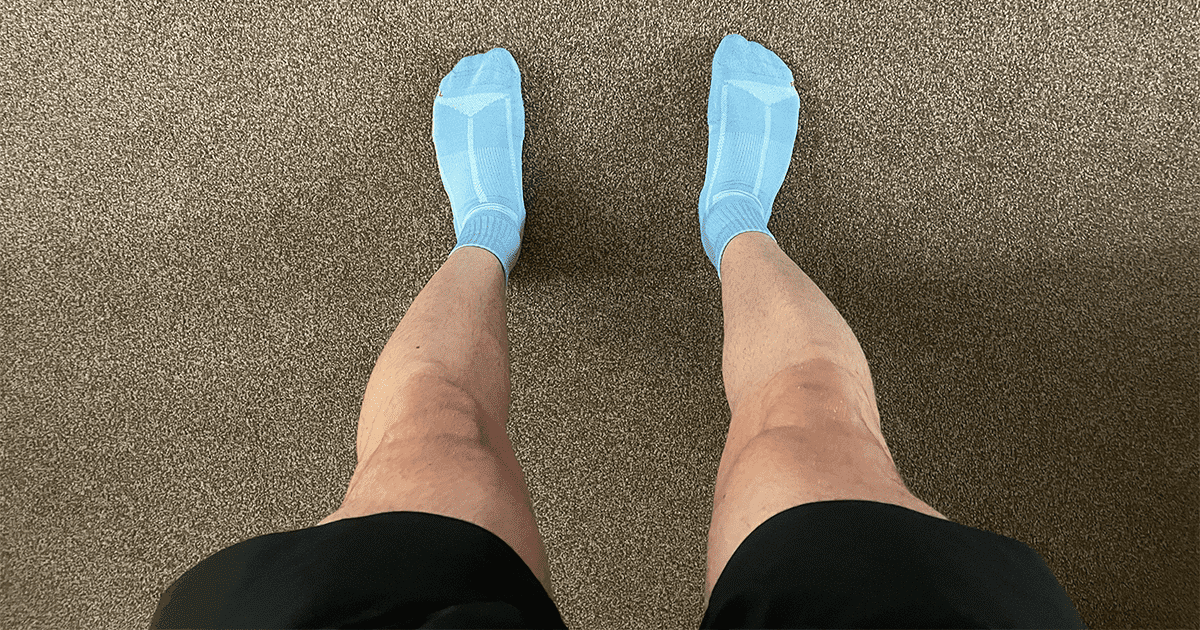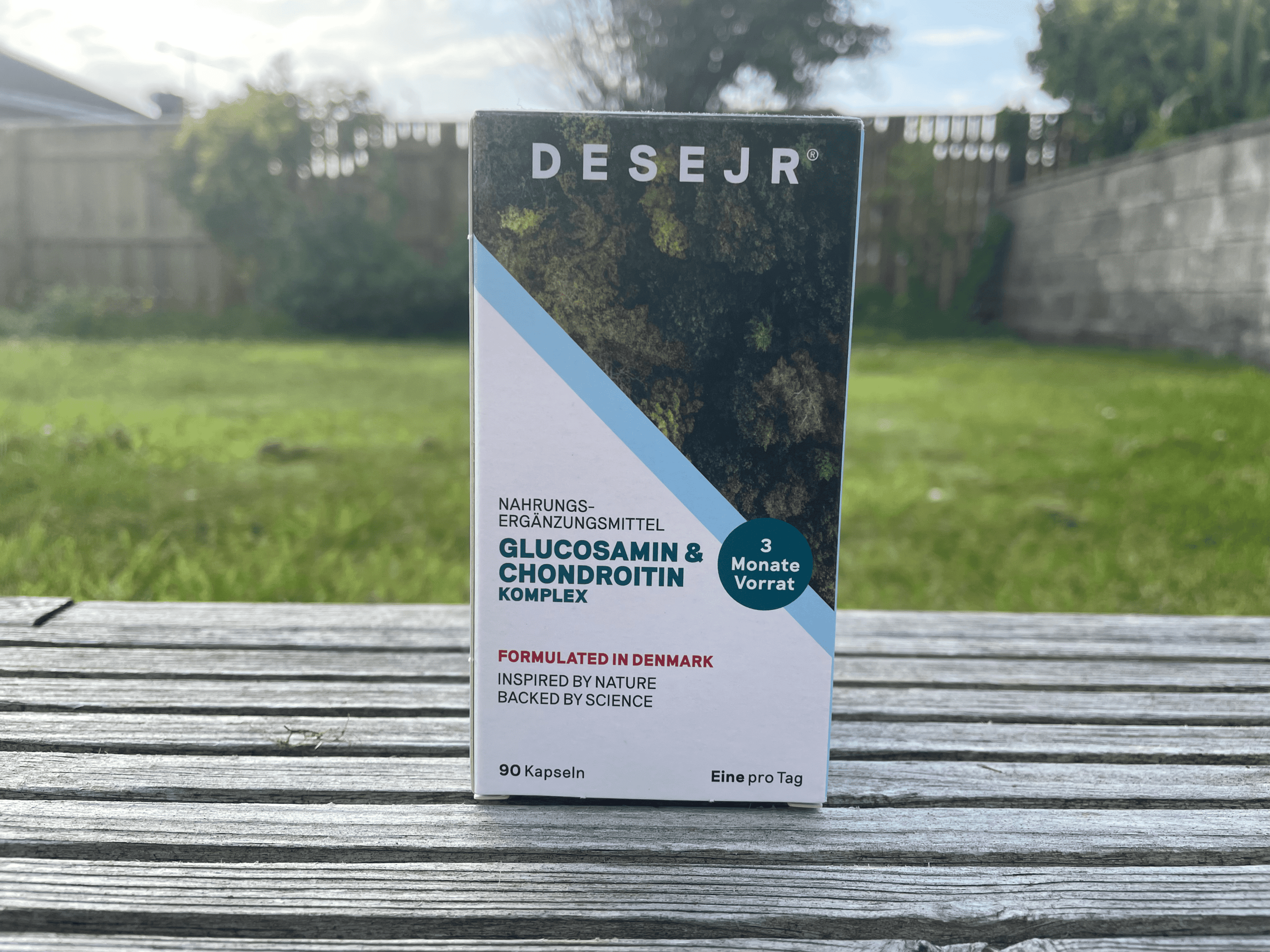Best compression socks for runners
Improve recovery and increase performance with a pair of compression socks for runners.
Compression socks for runners are currently all the rage, excellent for training, competition, and recovery the day after a hard run or race. But what makes compression technology so special?
For starters, compression socks – and other garments – increase blood to the muscles (translating to improved performance), decrease recovery times between runs and workouts, provide support during rehabilitation, and reduce swelling and inflammation. And that’s just a few of the potential benefits!
This blog post is a round-up of the best compression socks for running, allowing you to go the distance with your training. After our round-up, we also have a little more info on the benefits of compression gear and a short guide on how to choose the right pair for you.
If you’re looking for a non-compression pair of socks for running, then you can check out our best running socks post.
The best compression socks for running
This post contains links to Amazon and other affiliate sites. As an Amazon associate, we may earn a small percentage on qualifying purchases. Find out more here.
[lwptoc min=”2″ numeration=”decimal” toggle=”1″ skipHeadingLevel=”h1,h3,h4,h5,h6″]
1. Skins Performance compression socks for running
Features:
- Arch wrap support lessens strain on the sole of the foot
- Smart moisture management system
- Anti-chafing yarns reduce blisters and increase comfort
Pros:
- Increased protection for the soles of your feet
- Quick-drying material and antifungal technology means less washing
Cons:
- Most expensive option on our list
The Skins performance compression socks for runners are our number 1 choice.
The graduated compression improves circulation and delivers oxygen to the muscles to help clear blood lactate (good for performance & recovery), and also improves comfort. Extra support is found around the calf muscles – providing a snug but comfortable fit, and helps to reduce strain.
Moisture management wicks sweat away from your feet – it keeps your feet feeling fresh, even after a long run. And, like many other socks in this list, such as the Rockay Vigor compression socks, there’s also anti-blister technology thanks to anti-chafing yarns, which reduces friction.
The socks cost a little more than others on this list, but we believe it’s well worth the money!
2. 2XU Vectr Cushion compression socks
Features:
- Anatomical design provides plantar fascia and arch support
- Zoned mesh improves breathability
- X-Lock technology
Pros:
- Wide toe box reduces irritation
- Anti-blister design
- Quick-drying fabric
Cons:
- More expensive than other options
- Some runners may prefer a thinner sock
2XU are leaders in the sports compression space, so it’s no surprise that these socks are loved by many runners.
Unlike other compression socks, 2XU uses its unique X-Lock technology to lock your foot in place, providing extra plantar fascia and arch support – great for those with plantar fasciitis. The wide toe box also reduces irritation and hot spots, and ensures a comfortable run, whether you’re running 5 miles or a marathon.
The fabric is quick-drying, and the zoned mesh further improves breathability. These socks are also thicker than other options – such as the Rockay Vigor pair below – and they work just as well for recovery, as they do running.
3. Rockay Vigor compression socks for runners
Features:
- Odour control technology
- Sustainable and recycled design
- Breathable and lightweight
- Graduated compression
Pros:
- Lightweight and supportive
- Durable
- You don’t need to wash these as often
Cons:
- May run a little high for some runners
This pair of lightweight compression socks from Rockay are comfortable and durable. Unlike other socks, they contain a sustainable design and are made with recycled materials.
The odour control technology prevents bacteria build-up and helps keep your socks fresh. That means more running and less washing – ideal for a weekend running trip on your favourite trails.
Although, the socks may run a little high for some runners – but by following the size guide, you can ensure a comfortable and snug fit.
For more information on the Rockay Vigor compression running socks, you can also read our full review.
4. Danish Endurance graduated compression running socks
Features:
- Recommended by Olympic athletes
- Tested to the highest standards
- Sweat-wicking
Pros:
- May support injury rehabilitation, with multiple users reporting several benefits relating to less pain
- Tested with leading Swiss MST IT technology
- Thicker material than other compression socks
Cons:
- No padding
- The sizing guide may be a little confusing
- Some runners found these difficult to put on
Next up, we have a pair from Danish Endurance, another big manufacturer in the running sock space. This pair of graduated compression socks are very similar to the above pair from Rockay.
These socks provide 18-24 mmHg of compression, delivering optimal support to reduce swelling and aches and pains. They feel snug and secure but not too tight – great for running and recovery.
Unlike other compression socks on this list, though, this pair are Swiss MST IV tested to help pump, cleanse, and oxygenate your blood. They feel high-quality, durable, and comfortable. Oh, and they’re also recommended by Olympic athletes, including Stina Troest and Casper Mortensen.
The socks are slightly thicker than others, providing additional warmth. But some users reported a lack of padding and difficulty putting the socks on – just something to consider.
5. Hilly Pulse compression socks for running
Features:
- Upper foot ventilation enhances comfort when running
- Graduated compression offers performance & recovery benefits
Pros:
- Doesn’t need to be washed often
- Provides Achilles support for reduced pain (ideal for those coming back from an injury)
- Anti-blister design is great for those longer runs
Cons:
- Only available in one colourway
- May run a little loose towards the top of the sock (knee-high)
The Hilly Pulse compression socks are a great option for those on a budget.
You have the same benefits of graduated compression, too. The upper foot ventilation is also a nice addition, enhancing comfort when running. However, in particular, the additional padding provides much-needed Achilles support for some runners, excellent for those returning from an Achilles-related injury.
Also, similar to the pair from Rockay, these socks do not require frequent washing. Although the technology isn’t quite on par, you should be able to get at least two, but most likely more uses before throwing them in the wash and later hanging them up to dry.
Some runners found for these to run a little loose towards the top of the sock, stopping once in a while to pull them up (although we did not experience this).
6. Rymora compression socks
Features:
- Graduated compression (15-20mmHg)
- Additional padding in the toes, heel and sole of the foot
- Lightweight and breathable fabric
Pros:
- Additional cushioning and support
- Good option for wide feet
Cons:
- Compression around the ankle could be improved
- Some runners reported these to run a little loose
Another cost-friendly option, especially when compared to more ‘premium’ compression running socks, such as the pair from Skins, this pair from Rymora is a similar price to a large cup of coffee at your favourite Starbucks.
Like other pairs, these socks make use of additional padding, this time in the toes, heel, and sole of the foot, a slight improvement when compared to the above pair from Karrimor. This reduces impact when running and is a great option for those returning from a foot or lower limb-related injury.
Similar to running shoes, some compression socks suit those with more narrow or wide feet. Remember: there is no one size fits all answer when it comes to shoes or socks. However, multiple runners reported these socks to fit well even with wide feet – a somewhat rarity when shopping for running socks.
Despite this, others also mentioned the compression around the ankle to be minimal, as opposed to the pair from Skins, which benefited from advanced arch wrap support. Also, the socks may run a little loose in certain areas (choosing the right size should help combat this).
7. Physix gear running compression socks
Features:
- Quick-drying fabric
- Best suited for walking & active recovery
- Double-stitched seams increase durability and comfort
Pros:
- Durable and long-lasting
- Can be worn for multiple hours without discomfort
Cons:
- Stitching on the inner toe box may cause friction and blisters
- A few users have had issues with customer service
Finally, we have the Physix gear compression running socks, a mid-range sock with over 29,000 positive reviews on Amazon. Although not as impressive as other socks on our list, the fabric is quick-drying and breathable, great for those longer outings on the fells or trails, and certainly something we look for in all socks.
These socks may be better suited to walking, cross-training, and active recovery, for several reasons. But you can also use it for running if you choose.
Nonetheless, the anti-blister properties of these compression socks could be improved, with multiple runners reporting the inner toe box to cause general irritation, friction, and blisters.
Also, a few users have encountered issues with customer service. If you’re looking for a mid-range recovery sock, or a sock for those cross-training days, then this pair from Physix is a great choice – but there are certainly better, higher-end performance compression socks for running available.
It’s difficult to deny how many runners enjoy these socks – so if you’re looking for something in the realm of active recovery, this is the sock for you.
How to choose a pair of compression socks for running
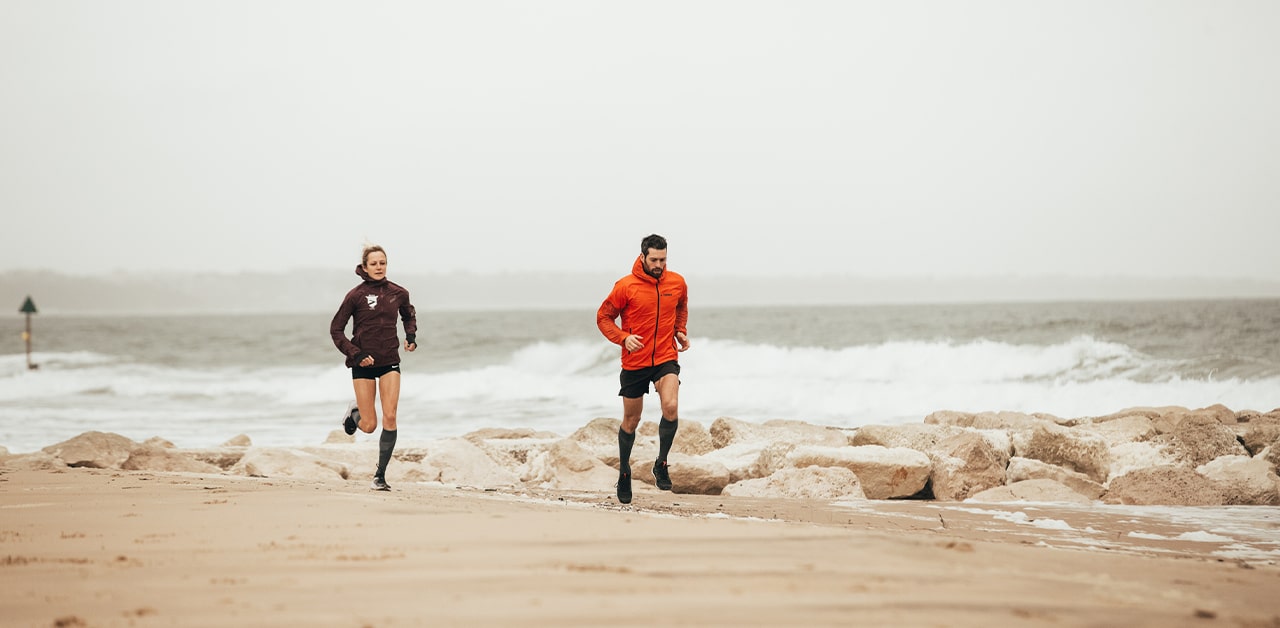
Choosing a pair of compression socks for running is almost as difficult as finding a pair of running shoes – there is no one size fits all solution. But there are several key things you should look for:
- Size
- Material
- Length
- Level of compression (mmHg)
Size
Sizing is not your standard shoe size. Instead, it’s a mix of calf and shoe size. This allows for a more precise fit and ensures the compression works as intended, i.e. it’s not too tight or too loose.
Get a pair of socks that are too loose, and they won’t deliver compression as intended – but a pair too tight, and you’ll be trying to fit a square peg into a round hole. You’ll have a hard time putting them on (and definitely taking them off).
Brands also typically have their own unique size guides. So check before buying to ensure a good fit!
Material
The material used for most compression socks is Nylon and Polymide. Some socks also use cotton – but these are not the best for running, and, instead, better suited for recovery. This is because cotton is poor at wicking sweat, resulting in blisters, chafing, and hot spots. Not fun!
Length
Most compression socks go up above the calves and sit just below the knee. But not all socks! You can also get normal ankle-length socks and three-quarter running socks that contain a small compression band for added support.
Although full-length compression socks (knee high) deliver the maximum compression benefits – this allows for optimal blood flow to prevent swelling and may increase performance.
Level of compression (mmHg)
Arguably the most important factor – the level of compression – determines how much pressure the socks place on your lower legs and feet. This is measured in millimetres of mercury (mmHg).
Typically, 20-30 mmHg is recommended for running or walking. Any higher than 30 mmHg and the socks may contain too much pressure, providing more hassle than benefit.
Should you wear compression socks while running?
Compression clothing applies direct pressure to the muscles – this increases blood flow and circulation, and for runners, may improve muscle temperature, running economy, and other biomechanical variables, according to research. Compression garments may also reduce inflammation, muscle pain, and damage.
Although the research is mixed – some runners can’t go without their compression socks, and others, don’t find much use. Despite this, there’s perhaps a greater benefit to wearing compression socks after running to improve recovery. The improved blood flow helps provide the muscles with the essential nutrients it needs while flushing out harmful toxins.
When to wear compression running socks?
Many runners prefer to wear compression socks for running longer distances; think: long runs, half marathons, and marathons. But arguably, where the most benefit is, is in recovery…
One study investigated the effect of compression tights on recovery in runners who had just completed a marathon. Results showed that the group who wore compression tights for 72 hours following their marathon experienced significantly lower perceived muscle soreness. And although there were no significant improvements in muscular strength or attenuation, the results are certainly something to consider.
FAQs
Do professional runners wear compression socks?
Yes! A lot of Elite runners wear compression socks during training, and especially for recovery purposes.
How tight should compression socks be for running?
Your socks should be snug, but not too tight – you should not feel any pain from wearing them.
What level of compression socks is best for running?
Between 20-30 mmHg of compression is typically best for running.
How long can you wear compression running socks for?
We recommend wearing these for a few hours at a time but avoid wearing these for the whole day. You should not wear these during the night, as this can potentially be dangerous.

Matthew is a lifelong runner, chief tester of all products, the founder of Running101, and freelance content writer for active brands. When he’s not writing, he enjoys lifting weights, cycling in the Lake District, and watching fast cars drive in circles on a Sunday. He also has a BA in sport, exercise and physical activity from the University of Durham.

